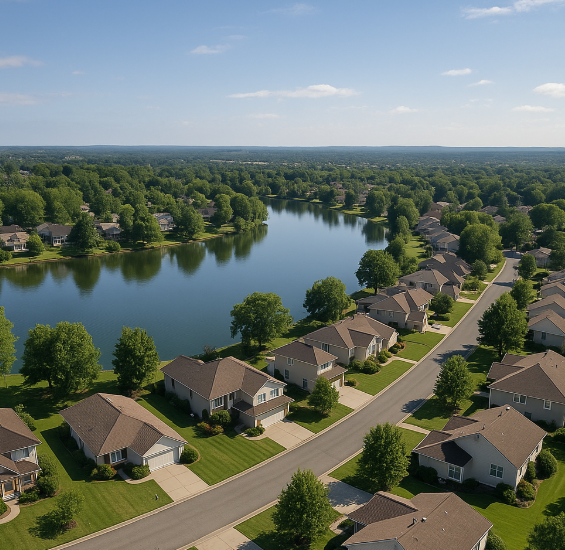Retirement in 2025 looks very different from the traditional “palm trees and resort living” ideal. Today’s retirees are searching for a balanced mix of affordability, safety, healthcare access, and a strong community atmosphere. And according to new national rankings, the best retirement destinations in the country offer far more variety than many expect.
From quiet Midwestern towns to sunbelt communities and walkable suburbs, the top retirement hotspots for 2025 reflect what older adults value most: stability, lower living costs, and a lifestyle that supports wellness and connection.
The Best Overall Retirement Markets in 2025
This year’s highest-rated metros stand out for their combination of reasonable home prices, quality healthcare, friendly neighborhoods, and overall livability. Cities like Midland, Michigan and Weirton, West Virginia earned top spots for their small-town charm and strong community feel. Meanwhile, warm-weather destinations such as Homosassa Springs and The Woodlands continue to attract retirees seeking mild climates and active-lifestyle amenities.
Florida remains a national favorite, but inland markets in Texas, Michigan, and Pennsylvania gained attention for offering value without sacrificing comfort.
Where Retirees Get the Most for Their Money
Budget remains one of the biggest deciding factors for anyone living on a fixed income, and several southern and Midwestern metros shine for affordability. Communities throughout Texas, Oklahoma, Michigan, and Kentucky offer home prices well below the national average, making them ideal for downsizing or stretching retirement savings.
Eagle Pass, Decatur, and Bay City lead the list of the most affordable retirement markets, with median home values under $200,000 and stable local economies that support long-term living.
The Most Expensive Places to Retire in 2025
On the opposite end of the spectrum, coastal California continues to dominate the list of pricier retirement destinations. Areas such as Newport Beach, San Rafael, and Santa Cruz pair exceptional amenities and ocean-side lifestyles with premium home prices. Honolulu and New York City also remain high-cost markets where retirees pay more for healthcare access, culture, and world-class recreation.
Safety Takes Center Stage
More retirees are prioritizing low crime rates and community stability as they decide where to live. Suburban areas in Virginia, Georgia, Indiana, and Washington rank among the safest places to retire this year. Cities like Centreville, Johns Creek, and Carmel stand out for their quiet neighborhoods, strong local services, and overall peace of mind.
In contrast, retirees choosing major urban centers for affordability may need to weigh price benefits against safety considerations in markets with higher crime rates.
Where Quality of Life Truly Shines
Beyond price and safety, many retirees want a daily lifestyle that feels fulfilling. High-scoring metros for quality of life combine access to healthcare, outdoor recreation, cultural activities, and strong neighborhood engagement. Sammamish, Mountain View, Encinitas, Carlsbad, and Mission Viejo excel thanks to scenic surroundings, clean environments, and vibrant community life.
These rankings reveal where retirees feel they can thrive, not just live comfortably.
Why These Rankings Matter for Buyers, Sellers, and Investors
Retirement trends influence housing demand across the U.S. Here’s what these insights can help you understand:
• Migration patterns: Affordable and safe metros often see increasing interest from downsizing homeowners and long-distance relocators.
• Investor opportunities: Markets offering strong value and stability may attract retirees purchasing second homes or long-term rentals.
• Messaging for real estate professionals: If you work in a retiree-friendly region, highlighting community life, healthcare access, and safety may resonate more than price alone.
Retirement today is about living with purpose, comfort, and security. Understanding where retirees are choosing to settle helps buyers make confident decisions — and helps sellers position their properties to attract the next wave of homeowners.



